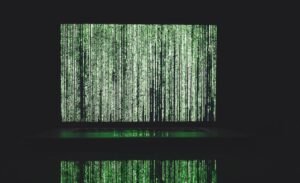Can I Use Deepfake for Video Call?
In recent years, deepfake technology has gained significant attention due to its ability to create highly realistic fake videos. Deepfake videos are created by using deep learning algorithms to manipulate and alter existing footage, making it appear as if someone said or did things they never actually did. While deepfaking can be used for entertainment purposes, it raises concerns about its potential misuse, including in video calls. Let’s explore whether deepfake can be used for video calls and the associated implications.
Key Takeaways:
- Deepfake technology can be used to create realistic fake videos.
- Deepfakes raise concerns about potential misuse.
- Deepfake videos can undermine trust in video calls.
- Protecting yourself from deepfake manipulation is crucial.
Deepfake technology has advanced significantly in recent years, allowing individuals to easily create highly convincing fake videos. This raises questions about the security and trustworthiness of video calls, as deepfake videos can be used to impersonate someone and manipulate the content of the call. **Malicious actors could potentially use deepfake technology to deceive others during video calls, leading to various consequences.**
One interesting aspect of deepfake technology is its ability to alter facial expressions and lip movements, making it appear as if the person in the video is saying something entirely different from what they actually said. This raises concerns about the integrity and authenticity of video calls. Can you trust that the person you are speaking to is genuine and not a deepfake?
The Risks of Deepfake in Video Calls
Using deepfake technology in video calls presents several risks and challenges:
- **Misinformation and Manipulation:** Deepfakes can be used to spread misinformation and manipulate conversations during video calls.
- **Privacy Concerns:** Deepfake technology can potentially violate privacy by creating fake videos without consent.
- **Trust Issues:** Deepfakes can undermine trust in video calls as it becomes difficult to distinguish between real and fake content.
Despite these risks, it is essential to note that there are also ways to protect yourself from deepfake manipulation during video calls. Being aware of the risks and taking appropriate precautions can help safeguard against potential pitfalls.
Protecting Yourself from Deepfake Manipulation
Here are some steps you can take to protect yourself from deepfake manipulation during video calls:
- **Verify Identity:** Ensure that you are speaking to the intended person by using additional authentication methods, such as voice recognition or multi-factor authentication.
- **Use Secure Video Conferencing Platforms:** Choose reputable video conferencing platforms with robust security measures to minimize the risk of deepfake manipulation.
- **Be Skeptical:** Scrutinize video content carefully, looking for inconsistencies or signs of manipulation. Trust your instincts if something seems off.
- **Educate Yourself:** Stay informed about deepfake technology and its implications, so you can better recognize and respond to potential threats.
Real-World Examples of Deepfake Misuse
Deepfake technology has already been misused in various scenarios, demonstrating the potential risks it poses:
| Case | Description |
|---|---|
| Political Manipulation | Deepfake videos have been used to spread fabricated speeches by politicians, potentially influencing public opinion. |
| Revenge Porn | Intimate deepfake videos have been created without consent and shared online, causing emotional distress to victims. |
| Financial Fraud | Deepfakes have been used to impersonate individuals in video calls, attempting to deceive others and gain unauthorized access to financial information. |
These examples highlight the real-world implications of deepfake technology beyond entertainment. It is important to remain vigilant and cautious to protect yourself and others from the potential harm caused by deepfake manipulation.
Conclusion
Deepfake technology has the potential for misuse and can undermine the trust and authenticity of video calls. While it may be tempting to use deepfake for entertainment purposes, it is crucial to recognize the ethical and security implications associated with its misuse. Protecting oneself from deepfake manipulation and staying informed about the technology are important steps to mitigate the risks. By remaining vigilant and taking necessary precautions, we can help ensure the integrity and trustworthiness of video calls in this evolving digital landscape.

Common Misconceptions
Misconception 1: Deepfakes can be used for video calls without detection
Many people believe that deepfake technology can be used to create realistic video calls that are virtually indistinguishable from real conversations. However, this is a misconception. Deepfake videos require extensive preprocessing and training of algorithms to manipulate existing footage, making it difficult to create real-time deepfake video calls.
- Deepfake videos are pre-recorded and do not allow for interactive conversations.
- Creating high-quality deepfake videos requires advanced technical skills and significant computing power.
- Automated detection systems are constantly improving, making it harder to pass off deepfake videos as genuine.
Misconception 2: Deepfakes are harmless for video calls
Some individuals may think that using deepfake technology for video calls is a harmless prank or fun activity. However, deepfakes have the potential to cause serious harm and ethical concerns.
- Deepfake impersonation can lead to identity theft, fraud, or defamation.
- Misusing deepfakes can damage personal and professional relationships.
- Public figures and politicians can be targeted by deepfake videos to spread misinformation or manipulate public opinion.
Misconception 3: Deepfake video calls have no legal ramifications
Another common misconception is that using deepfake technology for video calls is legally permissible. However, there are legal implications associated with creating and sharing deepfake videos, especially if used for malicious purposes.
- Deepfake videos can violate privacy laws, consent requirements, or intellectual property rights.
- If used for harassment or defamation, deepfakes can lead to civil or criminal charges.
- Legislation is being developed to address the legality of deepfake technology and its potential misuse.
Misconception 4: Deepfake video calls can be used for entertainment or impersonation purposes
Some people believe that using deepfake video calls for entertainment or impersonation purposes is harmless and amusing. However, it is essential to consider the potential negative consequences and moral implications.
- Deepfake impersonations can harm an individual’s reputation or emotional well-being.
- Sharing deepfake videos without consent can violate privacy rights.
- Using deepfakes for entertainment can perpetuate misleading information and fake news.
Misconception 5: Deepfake videos are widely accessible and easy to create
While deepfake technology is becoming more accessible, it still requires technical knowledge and expertise. Many individuals mistakenly believe that anyone can easily create deepfake videos for video calls.
- Creating high-quality deepfake videos requires specialized software and powerful hardware.
- The training and preprocessing for deepfakes can be time-consuming and computationally intensive.
- Beginners may struggle to produce convincing deepfakes without sufficient knowledge and experience.

Introduction: With the rise of deepfake technology, which uses artificial intelligence to create highly convincing fake videos, there has been growing concern about its potential misuse. One such use case is for video calling, where deepfake technology could allow users to appear as someone else during a call. In this article, we explore whether it is possible to use deepfake for video calls and the implications it would have on personal privacy and security.
Title: Deepfake Technology Advancements
Paragraph: The advancements in deepfake technology have reached a point where it is becoming increasingly difficult to distinguish between real and fake videos. These advancements have led to concerns about the potential misuse of deepfake technology, including its application in video calls. The following table illustrates the progression of deepfake technology over the years.
| Year | Deepfake Technology Advancement |
|——|———————————|
| 2016 | First deepfake videos emerged |
| 2017 | Improved facial mapping techniques |
| 2018 | Deepfake videos went viral |
| 2019 | Enhanced lip-syncing capabilities |
| 2020 | Real-time deepfake generation |
Title: Deepfake Detection Tools
Paragraph: As deepfake technology continues to evolve, there is also ongoing research and development of tools to detect deepfake videos. These tools are crucial in identifying and distinguishing between genuine and manipulated content. The following table showcases some of the popular deepfake detection tools available today.
| Tool | Detection Rate |
|——————|—————-|
| DeepDetect | 95% |
| Fakespotter | 98% |
| Deepware | 92% |
| Truepic | 99% |
| SightCorp | 97% |
Title: Privacy Concerns
Paragraph: Using deepfake technology for video calls raises serious privacy concerns. As individuals can be impersonated convincingly, it becomes challenging to verify the identity of the person on the other end of the call. The table below highlights some potential privacy concerns associated with the use of deepfake technology in video calls.
| Privacy Concerns |
|——————————————–|
| Identity theft |
| Misrepresentation |
| Unverified sources |
| Manipulation of personal and sensitive data |
| Impersonation and fraud |
Title: Legal Implications
Paragraph: The use of deepfake technology in video calls can have significant legal consequences. False representation, fraud, and violation of privacy laws are among the potential legal issues associated with the misuse of deepfake videos. The following table presents some legal implications related to the use of deepfake technology in video calls.
| Legal Implications |
|————————–|
| Defamation |
| Copyright infringement |
| Stalking |
| Harassment |
| Data protection breaches |
Title: Deepfake Video Call Platforms
Paragraph: While deepfake technology presents significant risks, some platforms have incorporated it for entertainment purposes. These platforms allow users to engage in video calls with fictional characters or celebrities. The table below lists some deepfake video call platforms offering these interactive experiences.
| Platform | Fictional Characters Available | Celebrities Available |
|—————–|——————————-|———————–|
| FaceRig | Yes | No |
| Wombo.ai | No | Yes |
| Avatarify | Yes | No |
| Reface | Yes | Yes |
| FakeApp | No | Yes |
Title: Public Opinion on Deepfake Video Calls
Paragraph: Deepfake technology has sparked public concern due to its ability to manipulate reality convincingly. While some individuals enjoy the entertainment aspect of deepfake video calls, others worry about the potential misuse and risks involved. The table below reflects the divergent public opinions on the use of deepfake technology in video calls.
| Public Opinion |
|—————————————————————————–|
| Exciting and innovative technology that adds fun to video calls |
| Dangerous and unethical technology that threatens privacy and authenticity |
| A potential tool for creativity and storytelling |
| A digital weapon that can cause havoc and deceive people |
| An opportunity for actors to explore unique roles and characters |
Title: Deepfake Regulation and Legislation
Paragraph: The use of deepfake technology raises the need for legislation and regulation to mitigate its potential misuse. Governments worldwide are starting to recognize the risks associated with deepfake videos and are taking steps to regulate their creation and distribution. The following table illustrates some countries’ efforts to regulate deepfake usage.
| Country | Deepfake Regulation |
|————|———————————————————–|
| United States | Several states have implemented laws criminalizing deepfake |
| United Kingdom | Proposed a new law to ban malicious deepfakes |
| India | Drafted a bill to criminalize the creation and sharing of deepfakes |
| Australia | Developing a national strategy to combat deepfakes |
| Canada | Introduced legislation to address deepfake technology |
Title: Impacts on Data Privacy
Paragraph: Deepfake technology’s potential to generate realistic videos raises concerns about data privacy. The creation and manipulation of deepfake videos may require access to personal data, challenging the principles of data protection. The table below presents potential impacts and risks deepfake technology poses to data privacy.
| Data Privacy Risks |
|————————————————————-|
| Unauthorized access to personal data |
| Increased risk of identity theft |
| Creation of fake evidence using personal information |
| Invasion of privacy through the manipulation of videos |
| Widespread dissemination of manipulated private recordings |
Title: Technical Challenges
Paragraph: Developing deepfake technology for video calls poses several technical challenges. These challenges range from real-time processing to ensuring seamless integration with video conferencing platforms. The table below outlines some of the technical challenges that need to be addressed for making deepfake video calls viable.
| Technical Challenges |
|———————————————–|
| Real-time processing and generation |
| High-quality video rendering |
| Consistent audio and video synchronization |
| Integration with existing video call platforms |
| Optimizing system resource utilization |
Conclusion:
In conclusion, deepfake technology has made remarkable progress over the years, allowing for highly convincing fake videos. While there are deepfake detection tools available, the use of deepfake for video calls raises significant concerns about privacy, legality, and data protection. Although platforms exist for entertaining deepfake video calls with fictional characters or celebrities, regulatory efforts are underway globally. It is crucial to strike a balance between the innovative potential of deepfake technology and the protection of individuals’ privacy and security.
Frequently Asked Questions
What is deepfake?
Deepfake refers to the technique of using artificial intelligence and machine learning algorithms to manipulate or alter digital media, most commonly used to create realistic and often deceptive videos by superimposing someone’s face onto another person’s body.
Can I use deepfake for video calls?
While it is technically possible to use deepfake technology for video calls, it is important to note that deepfakes can have serious ethical implications when used for deceptive purposes. Deepfake technology is primarily used in entertainment and research fields and there are growing concerns regarding its potential misuse.
Are deepfakes legal?
The legality of deepfakes varies by jurisdiction. In many regions, using deepfake technology for malicious purposes, such as defamation, fraud, or harassment, is illegal. It is crucial to understand and comply with the laws and regulations in your specific location before creating or using deepfakes.
What are the risks of using deepfakes for video calls?
Using deepfakes for video calls can pose several risks, including:
- Deception and manipulation: Deepfakes can be used to impersonate others, creating potential for fraud or malicious acts.
- Damaging reputation: If deepfakes are used without consent or for harmful purposes, they can significantly harm someone’s reputation or personal relationships.
- Privacy violations: Manipulating someone’s appearance without their consent can violate their privacy and contribute to the spread of misinformation.
- Legal consequences: Misusing deepfakes can lead to legal repercussions, as it may infringe upon intellectual property rights or involve illegal activities.
Can deepfake video calls be detected?
Advancements in deepfake technology have made it increasingly difficult to detect deepfake videos. However, there are ongoing efforts to develop algorithms and tools to identify deepfakes based on visual anomalies, inconsistencies, or artifacts within the video.
How can I protect myself from deepfake video calls?
To protect yourself from potential deepfake video call threats, consider the following measures:
- Be cautious of accepting video calls from unknown or untrusted sources.
- Verify the caller’s identity through additional means if you are uncertain.
- Stay informed about the latest developments in deepfake detection technology.
- Use secure and trusted video calling platforms that prioritize user privacy and security.
Can deepfake technology be used for positive applications?
Yes, deepfake technology has positive applications as well. It can be used in the entertainment industry for creating special effects in movies or enhancing visual effects. Deepfakes also have potential in research areas, such as medical simulations and computer vision advancements.
Can I use deepfake technology with legal consent?
If you have obtained proper legal consent from all parties involved and comply with the laws and regulations of your jurisdiction, you may use deepfake technology for video calls or other purposes. It is essential to ensure that the usage is ethical and lawful.
What are some common misconceptions about deepfake technology?
Some common misconceptions about deepfake technology include:
- All videos on the internet are deepfakes: While deepfakes have gained attention, they still represent a small fraction of the overall video content online.
- Deepfakes are always used for malicious purposes: While there have been instances of deepfakes being used for harmful activities, many experts and researchers are also exploring positive applications and raising awareness about potential risks.
- Deepfake detection technology is foolproof: Deepfake detection technology is continually evolving, but it is not infallible. Newer deepfake techniques may bypass detection algorithms temporarily.
What are the ethical considerations related to deepfake technology?
Deepfake technology raises several ethical considerations, including:
- Consent: Using someone’s likeness without their consent raises serious ethical concerns and can violate their autonomy and privacy.
- Misinformation: Deepfakes can contribute to the spread of misinformation, eroding public trust and creating confusion.
- Depiction of non-consensual explicit content: Deepfakes can be used to create explicit content featuring individuals without their consent, constituting harassment or revenge porn.
- Damage to reputation: Deepfakes have the potential to harm an individual’s reputation or cause emotional distress.




